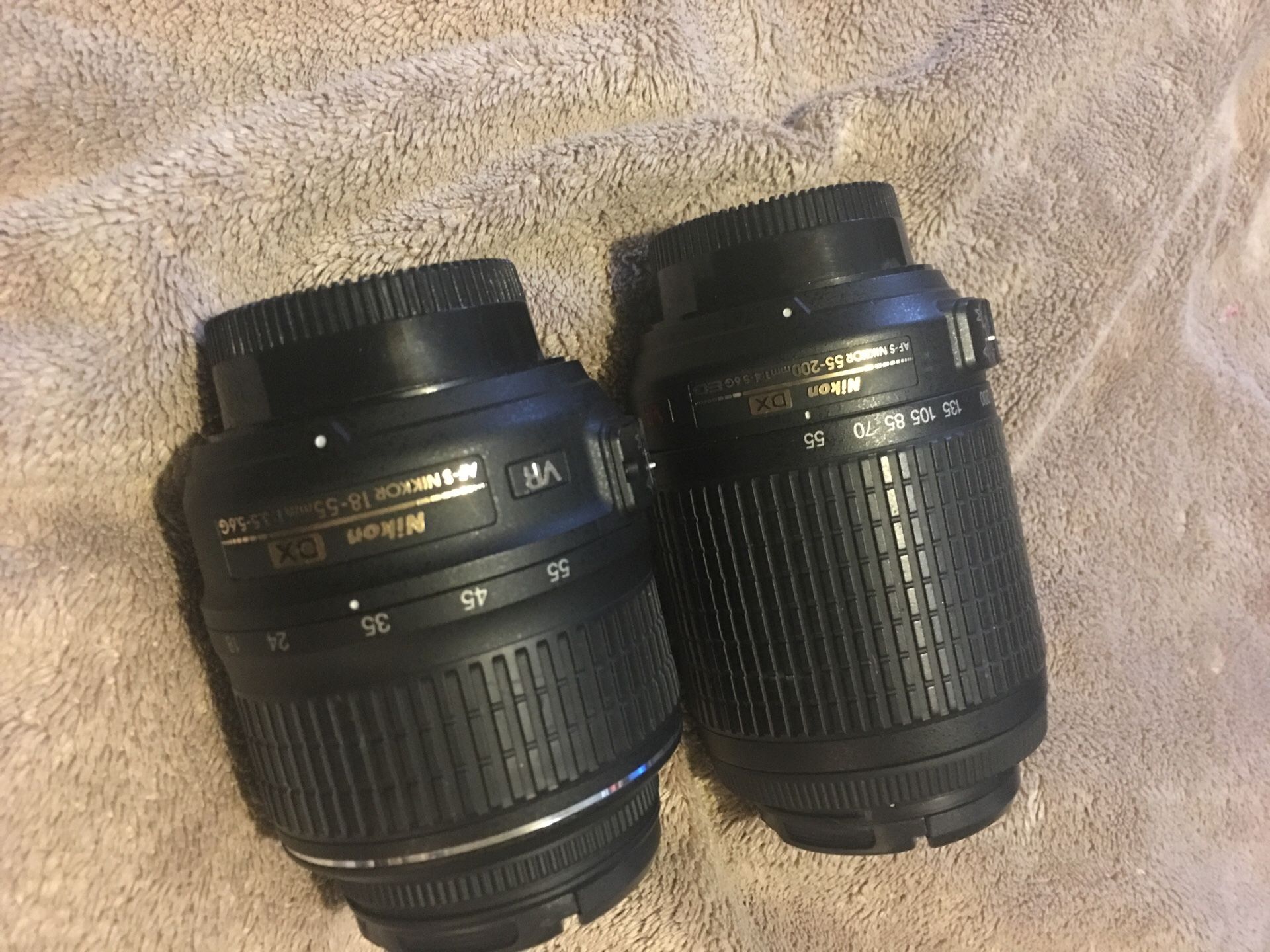Nikon 18-200mm Total VR SET lenses NIKKOR AF~S 18-55mm & 55~200mm both are DX SWM VR ED IF
$125
Posted about 5 years ago in Everett, WA
Condition: Used (normal wear)
Listed in categories: Electronics & Media - Cameras & Photography - Camera & Camcorder accessories
Sold by

SOLD
Additional images
Description
Both lenses are clean and clear with a total of 18mm to 200mm focal length this covers just about all you’ll need What is Vibration Reduction (VR) Vibration Reduction (VR) is an image stabilization technology that minimizes blur caused by camera shake. Using a VR NIKKOR lens can result in sharp images in low light, under windy conditions or when using a physically large NIKKOR lens, at up to four stops slower with a VR lens than a non-VR lens. This number of f/stops is based on CIPA standards and will change depending upon the specific lens. The value is achieved when a DX-format compatible lens is attached to a DX-format D-SLR camera and zoom lenses are set at the maximum telephoto position or when an FX-format compatible lens is attached to an FX-format D-SLR camera and zoom lenses are set at the maximum telephoto position. Nikon VR originates in the lens, not in the image sensor, which means that algorithms optimized to an individual lens are applied. Another advantage of lens-based VR is that a separate algorithm confirms the stabilization effect when you press the shutter release button halfway, giving you the freedom to compose your image more easily. The system can also detect the use of a tripod, recognize panning―an instance in which you wouldn't want the lens to compensate for movement―and address the specific shake caused by the ongoing vibration patterns produced when shooting from a moving vehicle. Nikon VR lenses use two angular velocity sensors, one that detects vertical movement (pitch), the other, horizontal movement (yaw), with diagonal motion handled by both sensors working together. The sensors send angular velocity data to a microcomputer in the lens, which determines how much compensation is needed to offset the camera's shake and sends that information to a duo of voice coil motors that move selected lens elements to compensate for the detected motion. Practical Uses of VR What does this mean in practical terms? A rock-steady camera is...
Save, Report, and Share
Item location map
Map is approximate to keep seller’s location private.
Related searches
- Canon
- Digital camera
- Canon lenses
- Sony camera
- Film camera
- Dslr camera
- Nikon lenses
- Camera lens
- Photo booth props